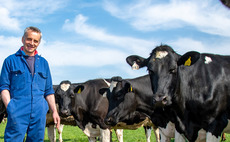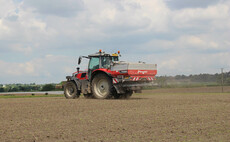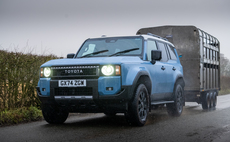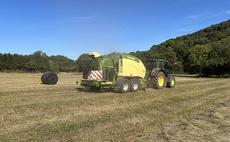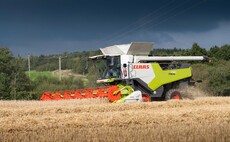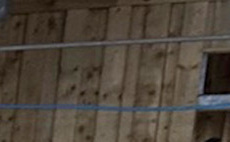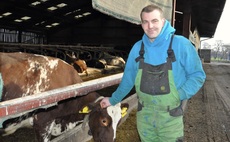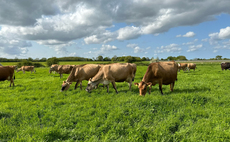
Rather than go for one of the usual big names, one West Sussex-based contractor has opted for a nine metre SIP butterfly mower-conditioner to boost output for his hay and haylage operation. Geoff Ashcroft finds out how the mowers are performing.
For Chris Harris of Harris Haylage, the ability to mow and condition grass with a fair degree of speed and efficiency has become an essential part of his process. He says; "To make high quality forage, we really need to be on top of our game. And that means having the capacity to get the job done quickly, so we can make the most of weather and the opportunities it creates for a premium haylage product."
Consisting of six feed rollers, a wider crop flow from feed rollers to the spout, adjustable chop length on the go, header-forward speed synchronisation, automatic spout ‘mirror' and a 40kph road speed, the Big X on paper offered superior output.
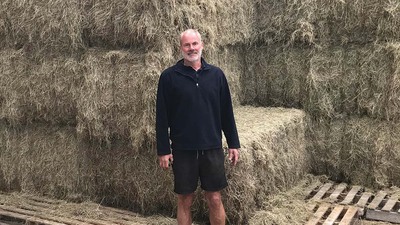
Chris Harris.
With one 340S used with an existing John Deere front-mounted unit, the other combination pushed the working width out that bit further, to 6.5m. "I liked the way the SIP mowers cut grass," he says. "Power requirement was comfortable, and output was good. But the wider 3.4m front-mounted SIP became tricky to handle on busy roads and in narrow lanes, so I had to have a rethink."
Looking for a more manageable front-mounted unit, Mr Harris swapped his one-year-old front-rear combination and upgraded to a SIP butterfly unit for the 2019 season. This outfit comprised a Silvercut 900C FC rear-mounted butterfly unit along with a narrower front-mounted 300F FC.
Comprising two, eight-disc cutting beds and a finger-tine nylon conditioner, the butterfly unit was to be paired with a front-mounted, seven-disc Silvercut 300F FC. "Having the 3m front mower is a much safer solution that is easier to transport, and now I have a 9m outfit," he says. "That is an extra 2.5m of cutting width and more capacity, over my previous SIP front/rear combination."
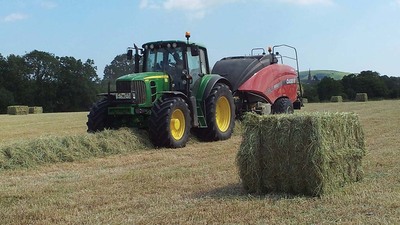
Harris Haylage makes a mix of round and square baled haylage.
Mowing about 800 hectares (2,000 acres) each season, Harris Haylage makes several thousand bales each season, comprising a mix of large square bales produced by a Case-IH LB334, while round bales are produced using a Kuhn VBP 2160 combination baler-wrapper.
Swaths are gathered using a 7.8m twin-rotor rake, allowing both balers to make the most of crop volumes.
A McHale 998 takes care of bale wrapping, while a pair of telehandlers speed up field clearance and bale stacking back at Bridgers Farm.
The firm has been supplying high-quality haylage to customers throughout West Sussex since 1995. In that time, Mr Harris believes his reputation for providing a high quality service has kept loyal customers using his services year-on-year.
"We run a well-oiled machine, with one eye on the weather and the other on grass varieties and crop volumes," he adds. "Though we tend to work in 20 acre blocks, as an element of risk management against changing weather patterns that could impact on our forage quality."
Grass is dropped in swaths, rather than spread immediately off the back of each mower. This affords greater control over the wilting process.
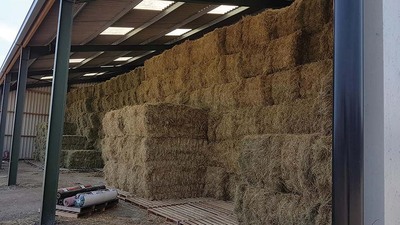
All bales are stored on pallets at Bridgers Farm, ready for distribution.
"We match the rear swaths to that of the front mower's swath, which sits between the tractor front wheels," he says. "It is no good spreading the grass solely off the back two - it would dry out quicker than the swath cut by the front mower.
"I did think about opting for plain disc mowers, but the conditioner aspect works well for us," he says.
"It does speed the job up, and it just means we have to keep a close eye on wilting and drying. And the nylon conditioner tines are not quite as aggressive as a steel tine, which makes them a good compromise for our system."
Mr Harris has two tedders at his disposal, to encourage fast and effective drying. One is an 8m Krone and the other is a 9m SIP Spider 900 - the latter is an eight-rotor unit that sits on a trailed chassis. "There is safety in numbers, with two tedders," says Mr Harris. "We do not want to be held-up when the crop needs to be dried, and the chances of both suffering a breakdown is thin."
The trailed SIP Spider also increases flexibility with tractor power too. "We do not need a big tractor to carry the tedder, as it runs on its own wheels," he adds. "And an MF6480 will handle it easily."
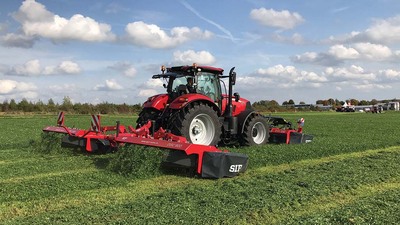
SIP Stronja produces a range of mowers and mower conditioners that includes mounted, trailed and butterfly units.
He says that the butterfly mower now handles the bulk of the mowing, with the front/rear combination able to be used for contract mowing. "We can still send the mowers off in different directions and keep two customers happy at the same time," he adds. "But the triple has the edge when it comes to output. Stubble heights are easy to manage and cutting quality is impressive thanks to the S-Flow suspension and its contour following."
Last year, power for the butterfly mower came from a John Deere 6930, though a Massey Ferguson 7726 will join the fleet for 2020, to take the mantle for the flagship machine. "I did not need any extra power, as these mowers have been surprisingly easy to drive," says Mr Harris. "But a bigger tractor means greater stability on the road, and you always knew there was plenty of weight sat on the 6930 when driving between farms."
When it comes to blade life, Mr Harris reckons a season's mowing can be done before the blades need to be turned.
"Three units now do less work overall than what two mowers did previously, so blade life has been increased for us," he adds. "Though there are more to swap and change, when you need to restore the cutting edge. Luckily, the quick-change blade system makes it easy enough to do."
Mower specifications
- Model: SIP Silver Cut Disc 900C FC with 300F FC
- Working width: 8.74m
- Power requirement: from 160hp
- Conditioner: Nylon tine
- Blades: Quick change
- Triple mower retail price (list price): from £53,390

















